 |
 W³TROPICOS
W³TROPICOS
QUICK SEARCH
MO PROJECTS:
Africa
Asia/Pacific
Mesoamerica
North America
South America
General Taxonomy
Photo Essays
Training in Latin
America
MO RESEARCH:
Wm. L. Brown Center
Bryology
GIS
Graduate Studies
Research Experiences
for Undergraduates
Imaging Lab
Library
MBG Press
Publications
Climate Change
Catalog Fossil Plants
MO DATABASES:
W³MOST
Image Index
Rare Books
Angiosperm
Phylogeny
Res Botanica
All Databases
INFORMATION:
What's New?
People at MO
Visitor's Guide
Herbarium
Jobs & Fellowships
Symposium
Research Links
Site Map
Search
|
 |
|
| |
|
The Missouri Botanical Garden has built considerable expertise in digitization
over the past 15 years. We currently employee five full time scanning technicians
working at eight different specialized scanning stations.
Two stations are designed specifically for scanning herbarium specimens. The
HerbScan system enables digital scanning without inverting specimen sheets. This
device consists of a scanner mounted upside-down in a vertically moveable frame
connected to a computer installed with scanning software and hard drive storage
to capture and retain the digitized image from the scanner.
We have three stations for scanning books and manuscripts. These are equipped
with Indus 5002 overhead planetary scanners and HP workstations. We have
scanned over two million pages on these scanners over the past five years. |
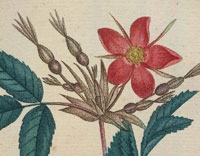
Illustration of Rosa gallica from Traité
des arbrisseaux et des arbustes cultivés en France et en pleine by
Jean Henri Jaume Saint-Hilaire.
|
One additional station has shared duty for scanning books, specimens and
oversized materials including maps and posters. This is a photographic copy stand
equipped with a Cambo 4x5 inch large format camera body attached to a Better Light
6150 scanning back. This station allows us to capture extremely high resolution
files. We have also purchased but not yet implemented an additional Leaf Aptus
10, a 56 megapixel instant capture digital camera back that will be used on this
station.
Two other stations include a Kodak high speed sheet feed scanner, as well
as a Kodak slide scanner for automated scanning of 35 mm transparencies.
|
Staff:
The lab is maintained and operated by the following staff members:
Projects:
- An Illustrated History of the Missouri Botanical Garden (1800-1920)
- Funded by a Missouri State Library Digital Imaging Grant. This site features over 500 images and metadata from our Archive, many from the late 1800's and early 1900's. These images include buildings on the Garden grounds, visitors, early views of St. Louis and even botanical expeditions. A timeline was also written to give users an overview of why the Garden was created and how it has grown since.
- Online at http://www.mobot.org/mobot/archives/.
|

Image of Agave group, looking east from display greenhouse. Main greenhouse is on left. June 1905. |
- Rare Books from the MBG Library
- Funded by the Andrew W. Mellon Foundation, this collaborative project will result in a large database of rare botanical literature. We have selected beautifully illustrated volumes from our collection that will appeal to botanists, art historians, and anyone who enjoys plants. This site includes author biographies, descriptions of the books, and current botanical names (when available).
- Online at http://www.illustratedgarden.org/mobot/rarebooks/.
|
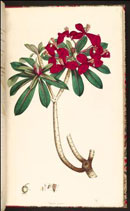
Illustration of Euphorbia punicea from Icones pictae plantarum rariorum by James Edward Smith. |
- Preserving and Digitizing Plant Images: Linking Plant Images and Databases for Public Access
- This two year project, funded by the Institute of Museum and Library Services, was successfully completed in November, 2000, but is still in operation. The purpose of our project was to link plant images with their associated data in TROPICOS and make the images and data available online. By doing this, we have created a rich repository of over 35,000 plant images that continues to grow daily.
- Online at http://www.mobot.org/mobot/imls/.
|
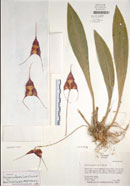
Type specimen: Dracula nosferatu Luer & R. Escobar
|
- Digitizing Engelmann’s Legacy:
- Sponsored by the Institute of Museum and Library Services and ERSI, this project was created to digitize important historical specimens from George Engelmann’s herbarium as well as literature related to the collection of these specimens so that they can be available to the public. Additionally, web interfaces for geospatial analysis and data modeling were integrated to provide a much richer visualization of where these specimens were collected on these expeditions.
- Online at http://tropicos.org/Project/Engelmann.
|
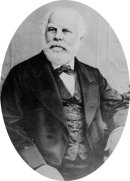
George Engelmann
|
|
Digitized Slide Collections:
- Dr. Alwyn H. Gentry, Ph.D.
- The Alwyn Gentry slide collection was the first project undertaken by the Lab’s IMLS Project. The original images were duplicated, the originals were placed in cold storage and the duplicates used as working images. The online images were all output in JPG format. The collection contains over 6,000 images of mainly neotropical plants from almost all plant families, but focusing on the Bignoniaceae Family. About 60% of the slides are vouchered, which means there is a dried herbarium specimen with collection data made for the live plant on the slide. These images are linked to specific specimen data in the TROPICOS database.
|
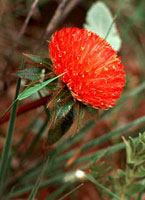
The inflorescence of Gomphrena officinalis.
|
| |
|
|
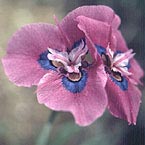
Morea villosa from Piletberg, South Africa.
|
| |
- Dr. Tom Croat, Ph.D.
- Over 1,500 slides of the Araceae family, of which Dr. Tom Croat of the Missouri Botanical Garden is an expert, were placed online. This was a very complete slide collection and only the best images were selected of almost every species of neotropical Araceae. The type specimens of Araceae named by Dr. Croat were also processed for imaging. |
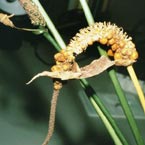
Infructescence of Anthurium lancetillense.
|
| |
- Edgar Dennison
- 635 slides of plants of Missouri and surrounding Midwest states taken by Edgar Denison, a local amateur botanist, have been placed online. These slides were in very poor condition, some with serious mold problems. They were cleaned the best way possible, duplicated, and the originals placed in cold storage. The duplicates were used as working slides. |
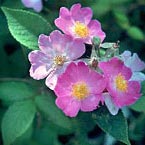
Rosa setigera flowers from Daniel Boone Memorial Forest, 1974.
|
| |
|
|
Flowers of Passiflora nitida.
|
| |
|
|
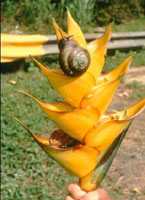
Heliconia inflorescence.
|
| |
|
|
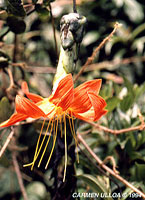
Mutisia magnifica, a spectacular 'daisy' from the Andes of Southern Ecuador described by Ulloa and Jørgensen.
|
Equipment:
Book Scanning
Indus Stations(3)
- Indus 5002 book scanner
- HP xw4300 Workstation PC w/ Intel Pentium 4 CPU, 3.20GHz 2GB RAM
Sheet Feed Station
- Kodak i280 sheet feed scanner
- HP Compaq dc5000MT PC w/ Intel Pentium 4 CPU, 2.80GHz 1GB RAM
Rare/Oversized Book Station
- Better Light 6150 scanning back
- Cambo SF 4x5 large format camera
- HP Compaq dc79000 Small Form Factor PC w/ Intel Core 2 Duo CPU, 3.00GHz
4GB RAM
- (2) Scandles 200s light w/ stand
- (2) Buhl SC-150 light w/ stand
- Kaiser motorized copy stand
Specimen Scanning
Herbscan Specimen Scanning Stations (2)
- (2) Herbscan specimen scanners w/ Epson Expressions 10000XL flatbed scanner
- HP Compaq dc5700 Small Form Factor PC w/ Intel Core 2 Duo CPU, 2.20GHz 2GB RAM
- HP xw4300 Workstation PC w/ Intel Pentium 4 CPU, 3.20GHz 2GB RAM
Other
Slide/Flatbed Scanning Station
- Nikon Super Coolscan 4000 film scanner w/ Nikon SF-200 slide feeder
- Epson Expression 1680 flatbed scanner
- HP Compaq dc5000MT PC w/ Intel Pentium 4 CPU, 2.80GHz 1GB RAM
|
|
|
|
|











